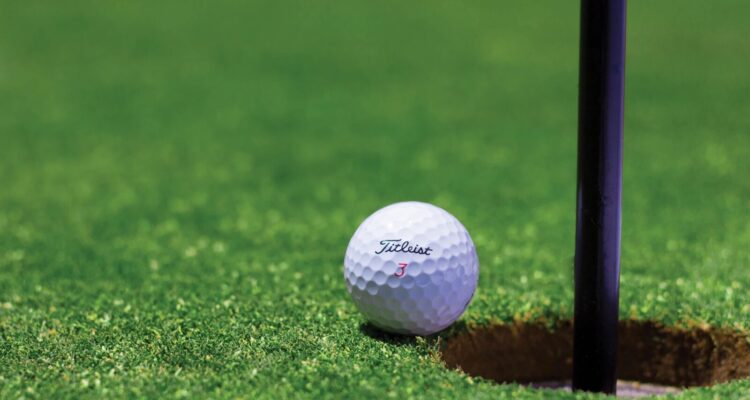Even though they look like basic clubs, wedges are as complex as the tech for drivers and irons. Look into the bag of any PGA Tour golfer. You’ll discover most of them got three to four wedges. Some even got five! Phil Mickelson is the most famous figure in this part of the golf. And he does make it look as easy as pie.
But the fact of the matter is, if you don’t know your loft and bounce combinations, your wedge part is gonna be a lot harder than usual. Even more, you’ll struggle with the green without the right kind of wedge. That’s why the right wedges add to your score and lower your handicap. Here’s what to consider when buying a wedge and how it improves your game.
Loft
The easiest way to understand wedges is to begin at the loft. For most of us, this was the only factor we considered when we were buying wedges. Now, you may want the 64-degree wedge Phil Mickelson has. But you need to remember that the gaps are more vital than the lofts. For instance, Spieth’s set has gaps of:
- Six degrees
- Four degrees
- Four degrees from pitch wedge to lob
But what is the gap? It’s the variation in loft between two wedges. You’ll have plenty of choices when you’re creating your wedge set. But for the best-case scenario, you need at least four wedges. This way, you can play shots from different lies around the green and cover the yardage gaps.
You should also consider the following factors when you’re buying the wedges:
- Ensure the golf store checks the wedges before buying them. Some of the stock wedges can be off as far as three degrees.
- Don’t buy wedges based only on the loft. You’ll learn why down below.
- Consider the gaps and the rest of the iron set. For instance, don’t mix 42-degree iron with a 50-degree PW.
Today, companies build iron sets to help you hit the ball further. Account for stuff like these when buying your wedges.
Bounce
If you’re new to golf, you likely don’t understand what is a bounce. But why should you understand bounce when you’re playing in amateur leagues? Well, did you know that 80% of golf players’ handicaps are due to how good they play inside 100-yards?
Dave Pelz, one of the most popular short-game golf gurus today, spent years of research to discover this fact. Of course, this doesn’t mean you should ignore your long game. The long game is the necessary part of actually enjoying golf. But you should actively improve your short game. And this starts with the bounce. But what is it?
The definition of bounce is that it measures how quickly and how much the wedges repel off the touching surface when it touches it. This means an advantage in events where the sand or turf is fluffy since it stops the clubs from digging deeper into the surface which slows the club. It can also spell disaster if you’re playing with a high bounce club on a tight turf. This is because the club will jump off the hard ground right on your golf ball. Meaning your shot will end up on the other side of the green.
Bounce has two parts. For starters, there’s the distance between the leading edge of the club when it stands above the ground, while the club’s face is square to your target. But this measuring is the only the start. There’s also the bounce on wedges which is different depending on the depth of the bounce. The depth of the bounce will determine how high your leading edge is above the ground when you open the clubface. For instance, when you play out of the sand.
Here’s how you should combine both of these factors when you’re buying a wedge. If you want a multi-faceted set of wedges, you don’t only require various lofts, but various bounces and their depth as well. For instance, some pros have bounces that range from four degrees all the way to ten degrees.
Yes, there are hundreds of combinations you can explore. But the following one will prove to be the simplest. Of course, this is only true if you’re using more modern lofts. The older ones had wedges only to as much as 51 degrees.
- The sand wedges, from 54 to 56 degrees, come with the most bounce. They have the deepest bounce as well. This makes them perfect for deep rough, soft dirt, fluffy sands, or other hazards that don’t allow crisp contact.
- The lob wedges, from 58 to 60 degrees have the narrowest and least bounce. This makes them perfect for pitching or chipping off tight and hard fairways. Or for cart path and compacted bunker.
- The ‘gap’ wedges, from 50 to 52 degrees have medium depth and a low bounce.
Pros tell that the lob and sand wedge are the most vital for the right bounce. This is because you’ll use the most to get around the green. Ensure you find the best lob wedge and sand wedge if you want to improve your score.
One more thing about the bounce. If you play a lot on tight, or even soft turf, ensure your wedge bounce is a match for such conditions. Or, if you play in the North where the grounds are usually lush and soft, you could try a sand wedge with a 12-degree bounce. As well as an 8-degree bounce lob wedge. Of course, don’t change the recommended depth.
But if you golf in Texas where there are a lot of tight lies and hardpans, you should try a 10-degree bounce sand wedge. As well as a lob wedge with a 4-degree bounce. Of course, don’t change the depths.
Grinds
Don’t be scared by this word. Grind is used to describe the depth of the bounce. It also refers to the materials that are ground away from various parts of your sole in order to have a more playable club in various weather conditions. Wedge makers often become creative with this part. So if you want to find out what works best for you, you’ll need to experiment with the grind.
Some of them are made for flexibility. Others will have fewer materials around the heel area to help you get the clubs to sit well during shots where you gotta open a clubface.



